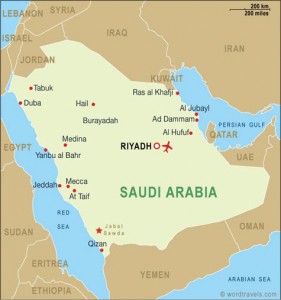By Rebecca Bundhun www.thenational.ae
Hundreds of thousands of pilgrims making the journey to Mecca will be able to use the holy city’s first metro, which is set to launch in time for the Haj this year, one of the contractors on the US$1.8 billion (Dh6.61bn) project says.
 About 2.5 million Muslims descend on Mecca in Saudi Arabia for the Haj each year. The scale of the event and the challenge in moving the participants from site to site has in the past led to deaths caused by overcrowding.
About 2.5 million Muslims descend on Mecca in Saudi Arabia for the Haj each year. The scale of the event and the challenge in moving the participants from site to site has in the past led to deaths caused by overcrowding.
It is hoped the Al Mashaaer Al Mugaddassah Metro, which runs for about 17km and links the sites of Mina, Arafat and Muzdalifah, will help solve the safety and transport problems.
Alain Delecroix, a vice president at Thales, which is responsible for the metro’s driverless train control and telecommunications systems as part of a €103 million (Dh489.2m) contract, said it would run at 35 per cent capacity this year.
“The distance is the full line with the nine stations, but the 35 per cent capacity means the frequency of the trains,” Mr Delecroix said.
The train would initially run with a driver but eventually would be driverless, similar to the Dubai Metro system.
The metro is expected to be operating at full capacity by the middle of next year.
“We call it a metro but it’s actually a crowd-management system, to be honest,” said Mr Delecroix. “With buses it takes five or six hours to do the journey during Haj. It will be a huge improvement in the circulation.”
At full capacity the metro is expected to carry 72,000 passengers each hour. China Railway Construction Corporation (CRCC) is the main developer of the project.
Mr Delecroix said the system was similar to the one in Dubai.
“Everything is raised,” he said. “The ground is not flat in this part of Saudi Arabia. It’s like Dubai Metro. The layout is similar.”
The number of pilgrims travelling to Mecca is expected to increase over the next few years, prompting plans for a number of major hotel projects around the holy site.
The total number of pilgrims for Haj and Umrah, which is the year-round pilgrimage, to the holy cities of Mecca and Medina is predicted to grow from about 7.8 million a year to 13.7 million by 2019, the consultancy Jones Lang LaSalle says.
“Most of the Haj involves people moving about from one place to another and this creates a lot of risks,” said Chiheb ben Mahmoud, the senior vice president at Jones Lang LaSalle Hotels MENA. “The sites are about 5 to 10km apart, so they are not walkable for many.”
Mr ben Mahmoud said the metro system had the highest capacity in the world.
About 12,000 people were working on the projects, Mr Delecroix said, adding he was not allowed access to the metro as a non-Muslim.
“The other difficulty is that we don’t have access to the site,” he said. “I cannot go to the site to check how is the metro. I’m not Muslim so I’ve never been there.”
Mr Delecroix said there was no option but to have the project completed in time for the pilgrimage.
“It must be completed for the Haj,” said Mr Delecroix. “… we cannot postpone the Haj.”


















